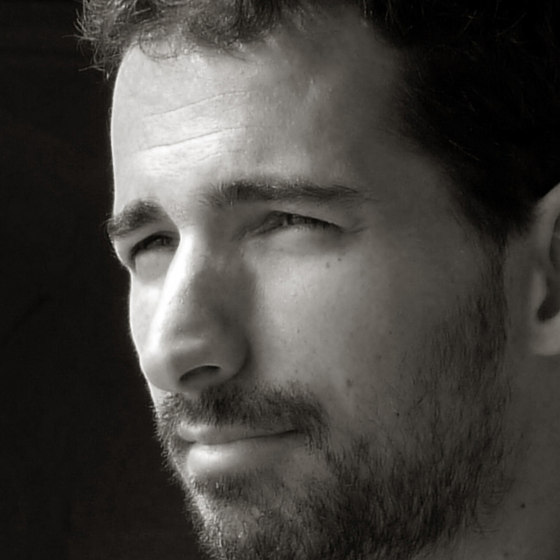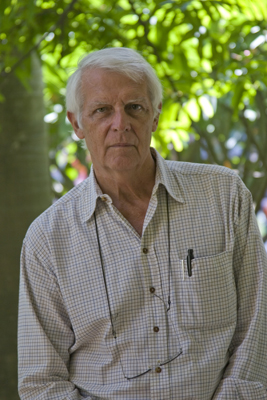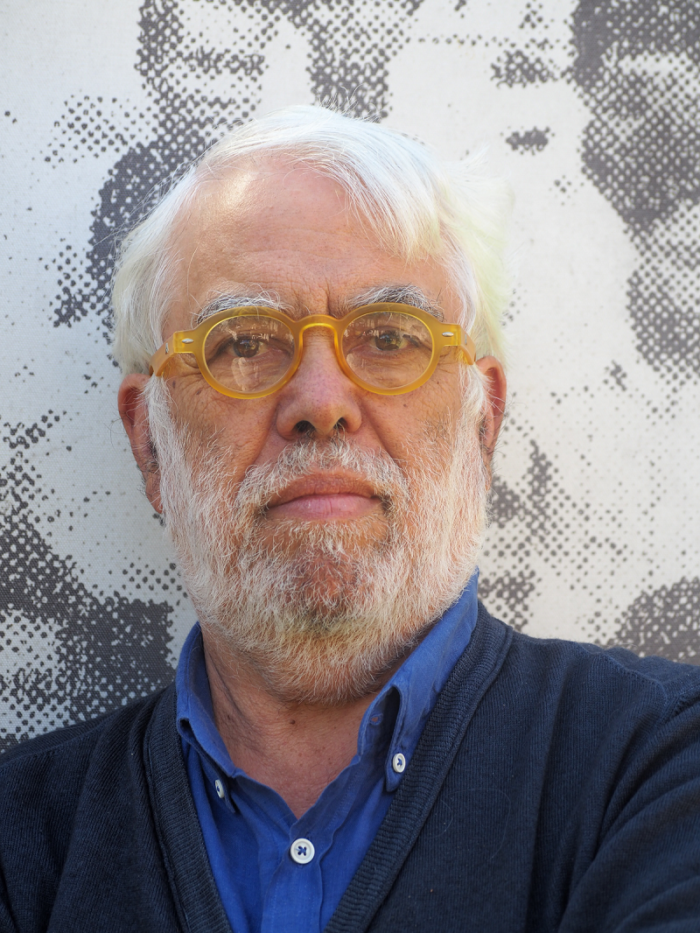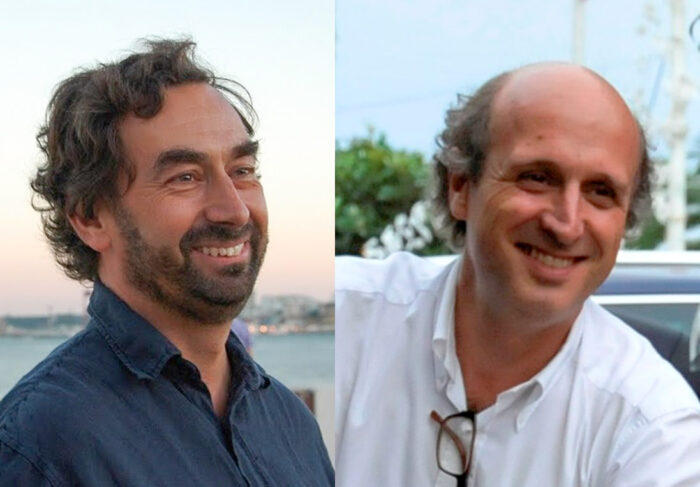A conversation with Arch. Miguel Marcelino

A conversation with Arch. Miguel Marcelino
'The invisible beauty of things has to do with perception, details ... which, due to their characteristics, add an invisible beauty that I find interesting to decode'
After his graduation in architecture, you did an internship at Herzog & de Meuron (Basel) and Bonell & Gil (Barcelona). Here you were a student of Carrilho da Graça, Manuel Aires Mateus, Inês Lobo, Nuno Mateus and Manuel Graça Dias. Was it important to gather so many different experiences?
In college I was fortunate to have teachers with remarkable careers. All of them had proven professionally and, in addition to being good architects, they were also good teachers. Each of them in a very unique way, with very different characteristics and personalities, ended up complementing each other. The classes were small, they were very present and there was a very close relationship, which was very enriching. These were the reasons that led me not to do Erasmus. I decided I would go abroad afterward and that’s what I did. I did an internship in Switzerland, for Herzog & de Meuron, which was a very positive experience. We are talking about the “Champions League” of architecture, at all levels, an international structure with a large dimension and works of enormous quality. Another very important thing was that I was in the center of Europe, which allowed me to travel a lot, which, looking back, was an equally important aspect in my training as an architect. On one of the trips I went to Barcelona and I liked the city so much that I thought “when I finish my graduation, I will come here to work for a while”. And so it was, I spent more than two years at the Bonell & Gil studio, which has a certain weight within Catalan architecture; its relatively small structure allowed me an active involvement in the projects. In the meantime, as a part-time, I started to do some tenders for Portugal, and I felt like doing my own projects again. I thought it was time for me to come back and I settled here in 2008. Then I won the Centro Escolar tender, which allowed me to consolidate a sturdier structure. I never had the dream of having a big studio in the business sense, what motivates me are the works that are interesting and that positively contribute to the territory.
I know you are interested in “absolute values” and the “invisible beauty of things”. How do you characterize your architecture?
This question of absolute values comes from my attitude towards architecture and buildings. We have many notable examples for the discussion they generated, for the research that was done to get there, or for the parallel stories and curiosities that happened during the process. But what I consider essential is the absolute value of the thing, the pure reality that is presented to us. Great works do not need subtitles or to be explained by guides. Therefore, the final result is one of the main qualities that I value as an architect, more than the process to get there. The invisible beauty of things has to do with perception, psychology, phenomenology, regarding the space and the built environment; the beauty that goes beyond the visual aesthetic, which is the dominant aesthetic nowadays. The perception that we have of a city, a square, for example, when combined with live music, is completely different from its normal day-to-day reality. These are tensions, details, unusual situations, human factors, natural or even spiritual, which by their own characteristics, add an invisible beauty that I find interesting to analyze and decode for later, who knows, may even be useful in my work.
You have won several tenders. Now the most recent one, the Escola Superior de Enfermagem de Lisboa project, carried out with BETAR, will begin. What do think about the tendering system in Portugal and what significance do these recognitions have?
Tenders are always a hot topic. The investment is brutal, it takes weeks of work, that if we multiply by the hourly value is absurd, and to win a contest, we have to participate in dozens that we don’t win. But it is a bit like Churchill’s definition of democracy, in this case: “the public tender is the worst way to choose designers, except for all the others”. The biggest works that I get are through tenders. I don’t have privileged contacts in any administration and if it weren’t for the tenders, I probably wouldn’t be able to mantain my studio. But the most problematic issue, in my opinion, is the scarcity of concept public tenders that exist in Portugal. In many other countries it is an usual practice, it seems to be an exceptional event in here, and it shouldn’t be. Since there are few, there are many more competitors in each one and the chances of winning decreases. Regarding the awards recognition, I usually say that in architecture the curriculum is undervalued, what matters is the portfolio, the actual work. Nowadays there are awards for everything, so what really matters is whether it deserves recognition or not. It is always good to have another 1st prize in the curriculum but, much more important, it is the possibility to build a building that becomes very successful.
You’ve recently worked with BETAR on the Centro Escolar de Fonte de Angeão project. What do you look for in structural engineers?
I try to make my relationship with the engineers as active as possible, kind of a ping pong game. I am against simply delivering the drawings so that the engineers may introduce their structure. I like to study and try to master technical engineering issues in order to, whenever possible, have logical thinking since the beginning with the various engineering departments, allowing dialogue and a common construction, rather than hiring a service provider. The eng. José Venâncio has this dynamic, which is what I expect from a structural engineer. The Centro Escolar de Fonte de Angeão is the perfect example, the structure is the architecture, the wall finish is the structural element itself that is visible, the technical infrastructures are part and are also protagonists of the visible space.
In 2014 you have joined the official Portuguese representation at the Venice Biennale. How was that experience?
The curator was the architect Pedro Campos Costa who chose a different approach, which was a newspaper, and took advantage of the occasion and the visibility that the Bienal has to catapult new projects and trigger debates on various pertinent topics. I was invited to participate in the “rural” theme. Together with the municipality of Évora, we started to debate how we could reuse the obsolete agricultural heritage and certain old structures, which then led to a specific project for the rehabilitation of a granary in the city center. This possibility of creating reflection and debate, but also specific and useful proposals, was an interesting strategy.
This interview is part of the Artes & Letras Magazine # 60, January 2015
Partially automatic translation from portuguese: some expressions may differ from their actual meaning.
News & Interviews
A conversation with Arch. José Forjaz
'I am an internationalist. Only like that we can be consistent with a society that we want closely integrated. I feel like an architect. I think our homeland is where we work. ’ Read more
A conversation with Arch. Fernando Bagulho
‘It is necessary to solve the new needs of living, (...) the challenges of teleworking. (...) We still have, as a paradigm of urban housing, models more than one hundred years old (...) that will be necessary to combine with utility housing, an alternative to the workplace.’ Read more
A conversation with Arch. Pedro Ravara and Arch. Nuno Vidigal
'The relationship with the students is fascinating and fundamental in order to stay "up to date". They are our best specialty magazine'. Read more




